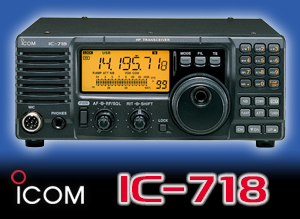Propagation News – 22 September 2024
It was a topsy-turvy time for HF propagation last week with a declining solar flux index and geomagnetic disturbances thanks to coronal mass ejections (CMEs) from the Sun.
The solar flux index declined to the mid-160s, and the Kp index had a couple of excursions to more than 7. These were due to CMEs and the second, which occurred on Tuesday, the 17th, was associated with the X4.5 solar flare on Saturday, the 14th.
Luckily, it was 0300UTC when the CME hit the Earth, so only die-hard UK DXers were affected. With a G4 geomagnetic storm raging, the maximum useable frequency over a 3,000km path fell to less than 6MHz, but did manage to recover to 8.45MHz by dawn.
The rest of Tuesday was subdued with the maximum useable frequency never really getting above 21MHz. This is why the advice is often to avoid DXing when the Kp index climbs high, as the upper HF bands will likely be closed.
By comparison, on Thursday, the 19th, the Kp index was 2.67 and the maximum useable frequency over 3,000km was above 28MHz again.
NOAA puts the risk of another X-class flare at 10 percent, and an M-class event at 55 percent. So, we are not out of the woods yet.
Next week, the Space Weather Prediction Center says the solar flux index may decline slightly but could then rise to be in the 232 to 240 range. Geomagnetic storming is predicted for the 26th to the 29th, when the Kp index could rise to 5.
Meanwhile, autumnal HF conditions should soon be kicking in with better propagation to North America. If the solar flux stays high, we can expect excellent 28MHz propagation, perhaps to the mid-west and Pacific states.
North-south HF paths, such as the UK to South Africa and South America, should also be good around the equinox period.
VHF and up propagation news from G3YLA and G4BAO
The last week of tropo gave us good conditions across the North Sea and up and down the country on the VHF and UHF bands.
It is very likely that there will be a big change of weather type over this weekend—ending on Sunday, the 22nd—to a much more unsettled pattern with low pressure dominating during the coming week.
In fact, there will be a sequence of lows, fronts, and showery interludes to set the template for next week. This means that rain scatter is a good candidate for propagation on the GHz bands, which could be useful on the evening of Tuesday, the 24th, during the SHF UK Activity Contest. Meanwhile, tropo takes a back seat for a while.
The solar activity continues to be of interest and, again, the message is to monitor the Kp index to keep one step ahead of events in case any aurora spring up.
Meteor scatter is mainly down to random activity, although the daytime Sextantids peaks on Friday, 27 September, but with a low zenith hourly rate of 5.
For EME operators, Moon declination is positive and rising, reaching +29 degrees next Tuesday, so Moon visibility windows will continue to lengthen. Path losses are increasing as we passed perigee last week. 144MHz sky noise is moderate, dropping back to low next Thursday.
Category: GB2RS Propagation News










